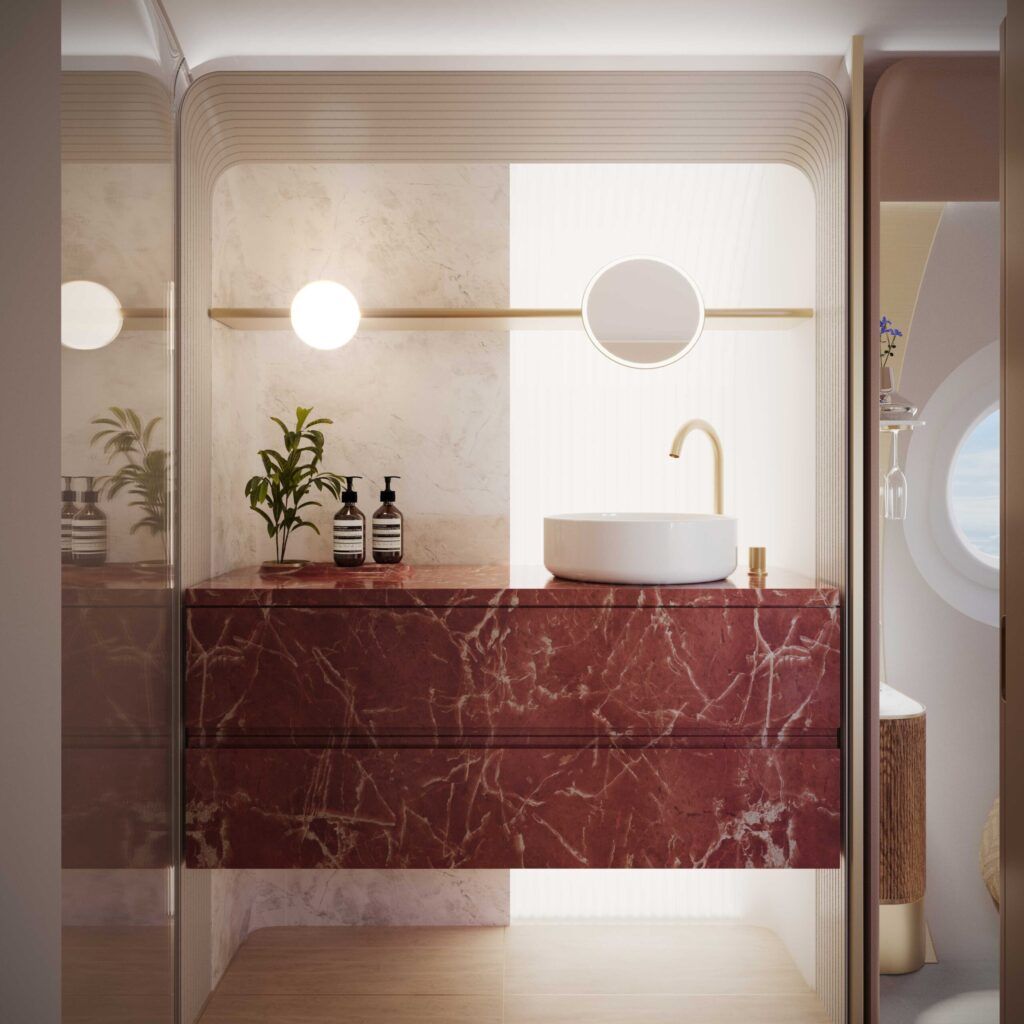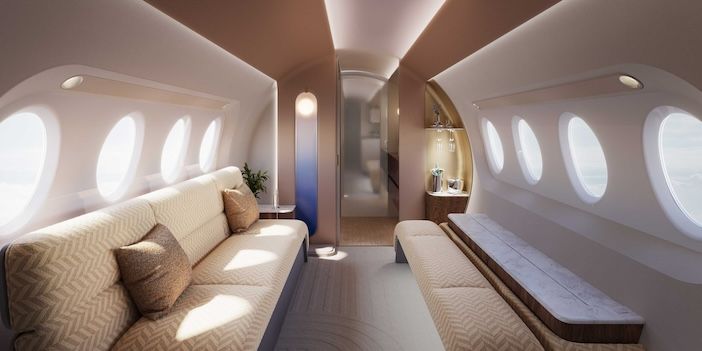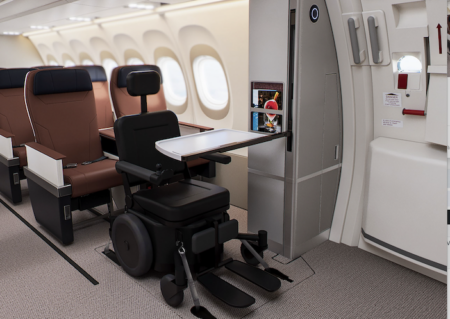Global multidisciplinary design studio, JPA Design, has revealed Afterglow, a private jet retrofit concept designed to prioritise passenger well-being and champion sustainability.
The highly customised redesign includes details and finishes crafted by JPA Design, including luxury amenities such as a custom mini bar, full-length wardrobe, and bespoke side furnishings.
A standout feature is the sophisticated biodynamic lighting system, with a wall-mounted orb that synchronises with the overall cabin lighting and replicates the solar movements of the sunrise and sunset.
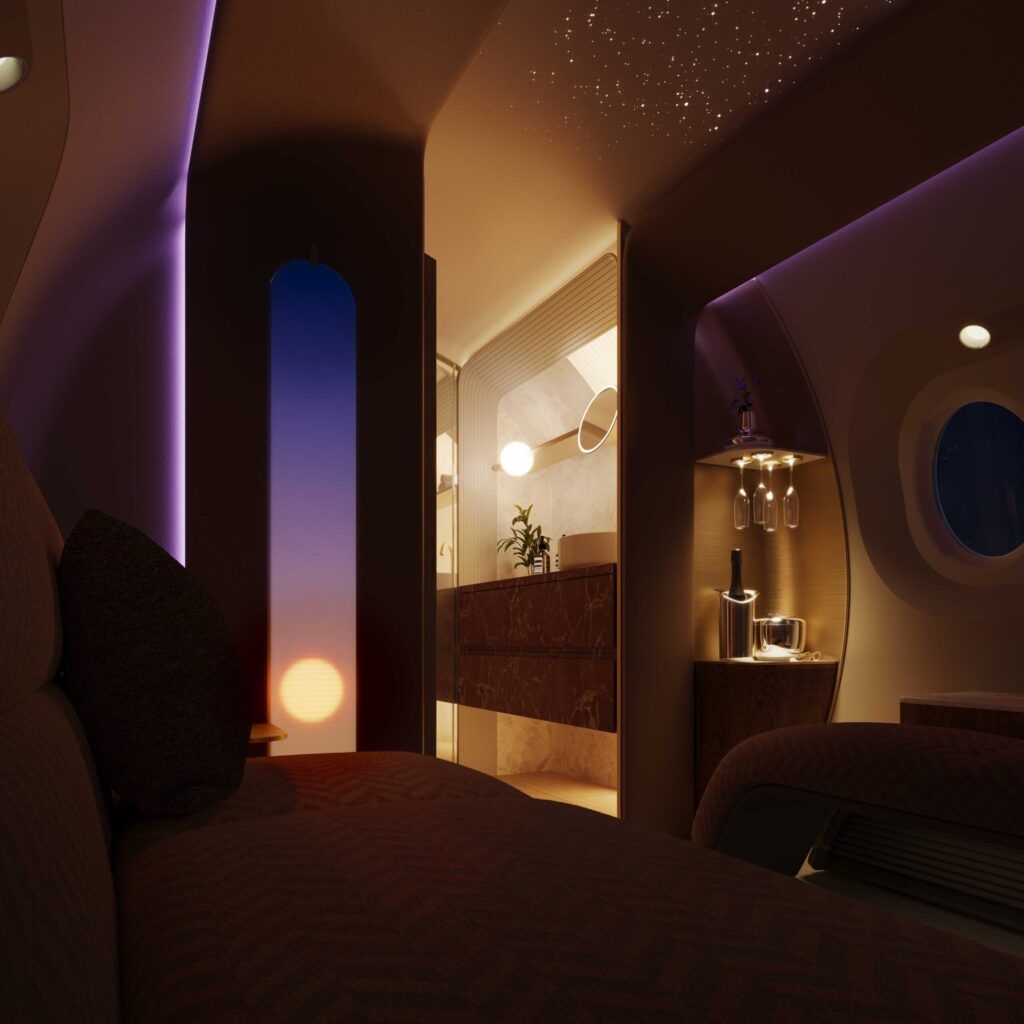
The system adjusts to optimal lighting scenarios based on flight time and destination time zone, aligning with passengers’ natural circadian cycles. By choreographing the environmental lighting, the Afterglow cabin facilitates passengers’ physiological adaptation to destination time zones during flight, effectively mitigating the effects of jet lag.
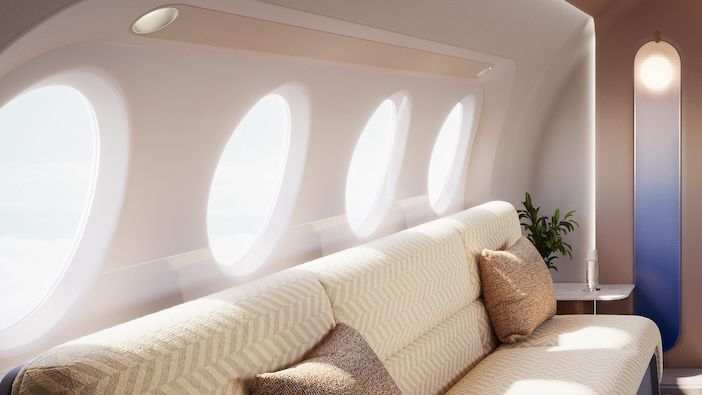
Elliott Koehler, creative director at JPA Design, said of the concept: “With Afterglow, we’re redefining what luxury means in private aviation. True luxury today isn’t just about aesthetic beauty – it’s about creating environments that actively enhance our passengers’ well-being. Every design decision, from our lighting system to the intuitive cabin layout, serves both form and function.”

The cabin’s layout also prioritises both comfort and functionality. The spacious lavatory, positioned at the rear for optimal privacy, doubles as a changing room. Access to the washroom is unobstructed, as the convertible sofa-to-double bed is strategically offset to ensure an easy approach in any configuration.
The retrofit scheme is intended to avoid operational aircraft in the growing private aviation sector facing premature retirement due to having outdated interiors. The Afterglow retrofit cabin is designed to breathe new life into existing aircraft through innovative design solutions, reducing waste while elevating the passenger experience.
While Afterglow is initially developed for the private aviation sector, JPA Design believes its approach to the concept has the potential to shape the future of flying, signalling a broader vision for the future of commercial aviation.
